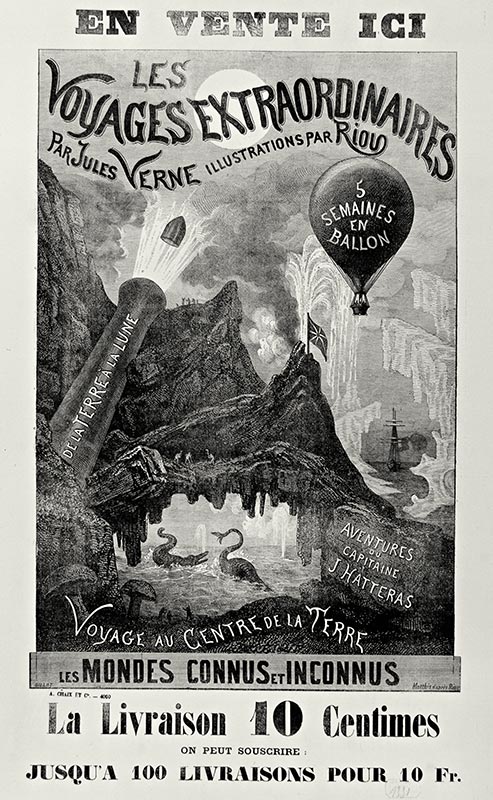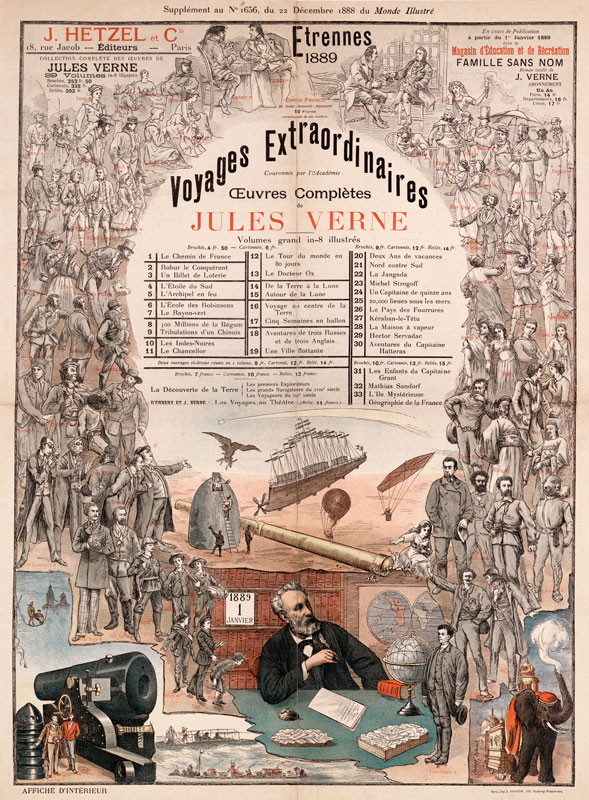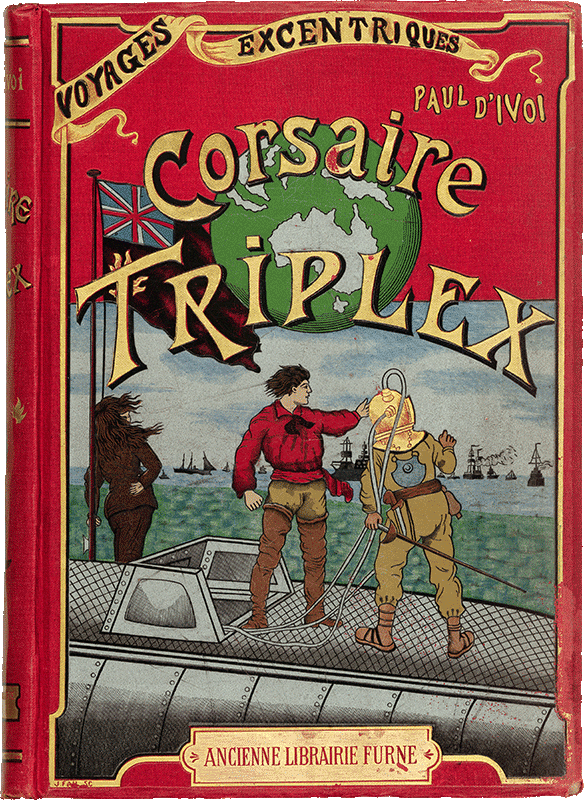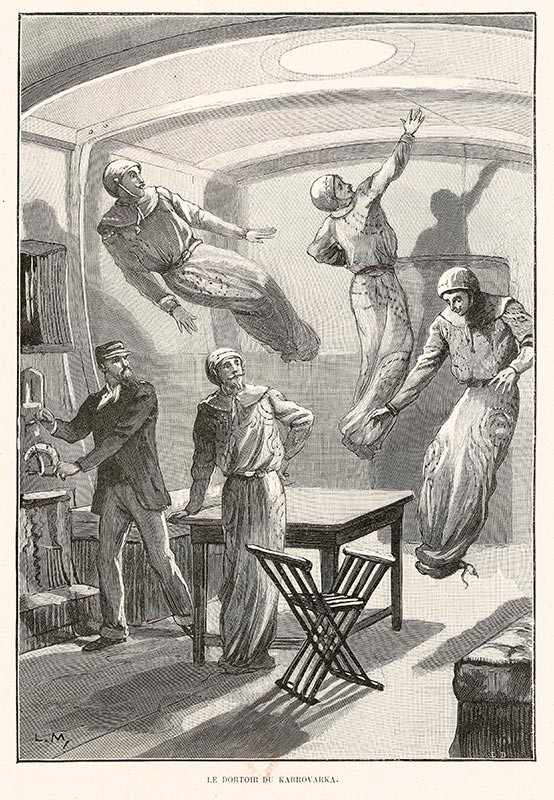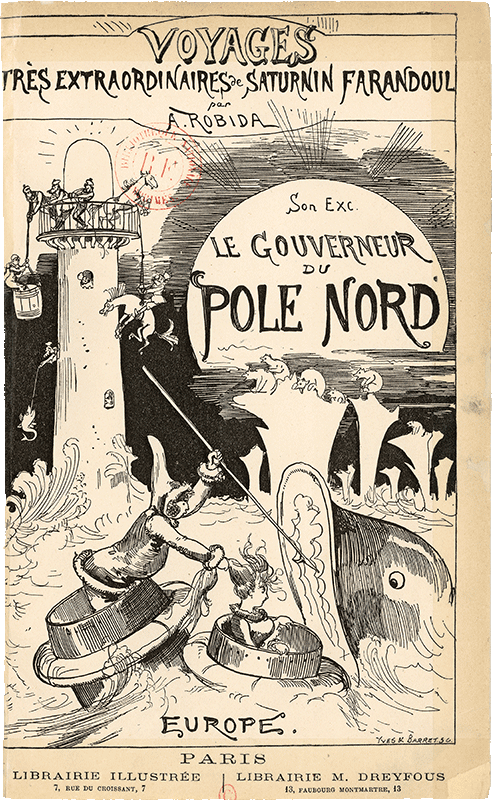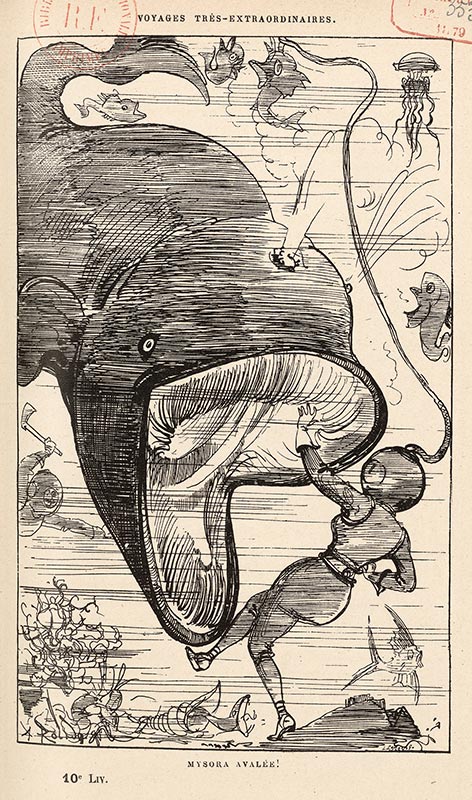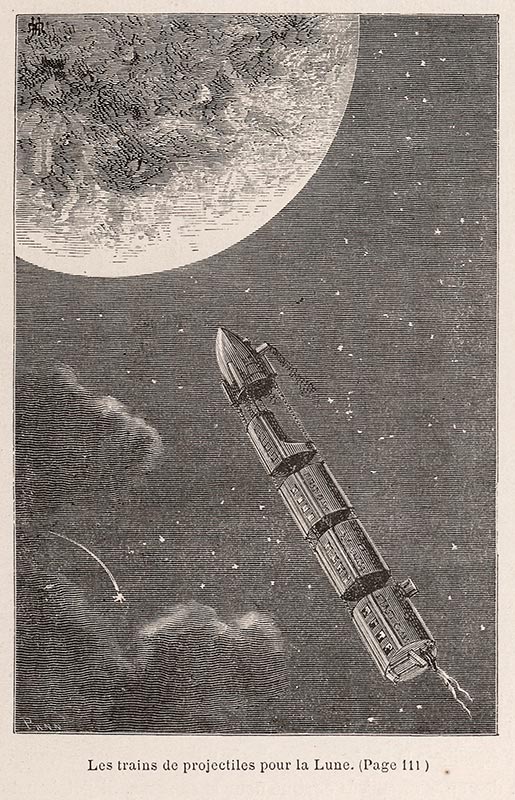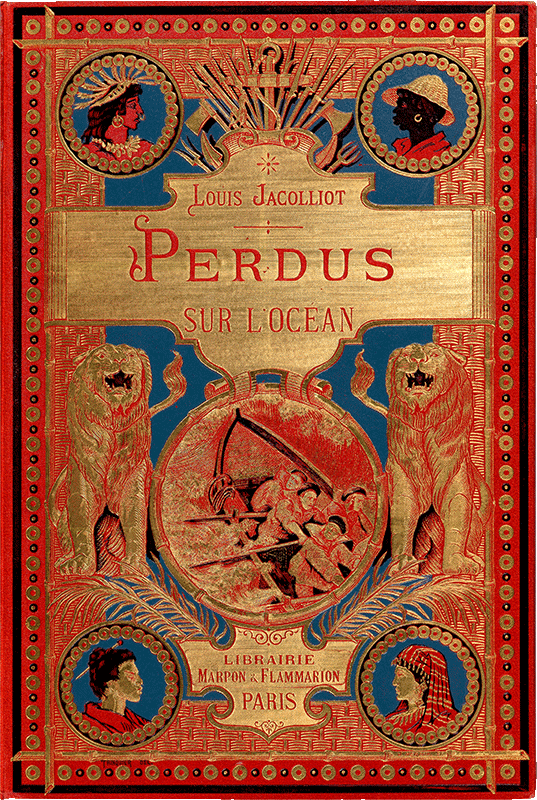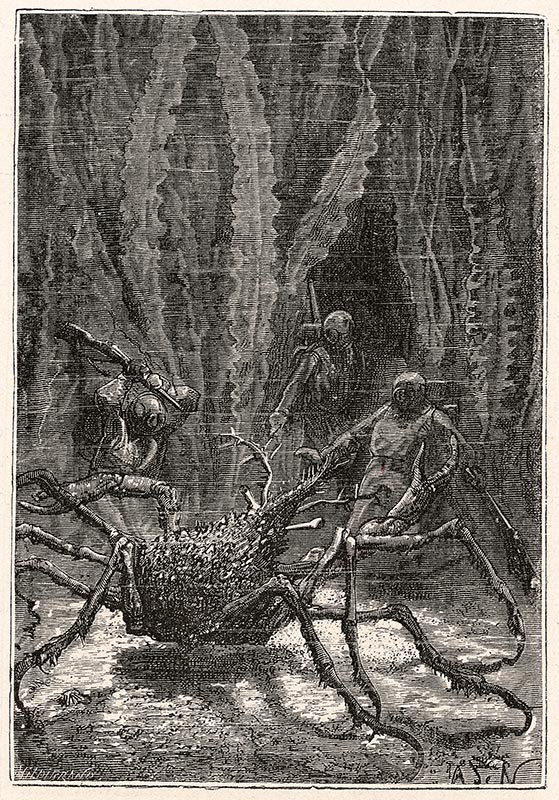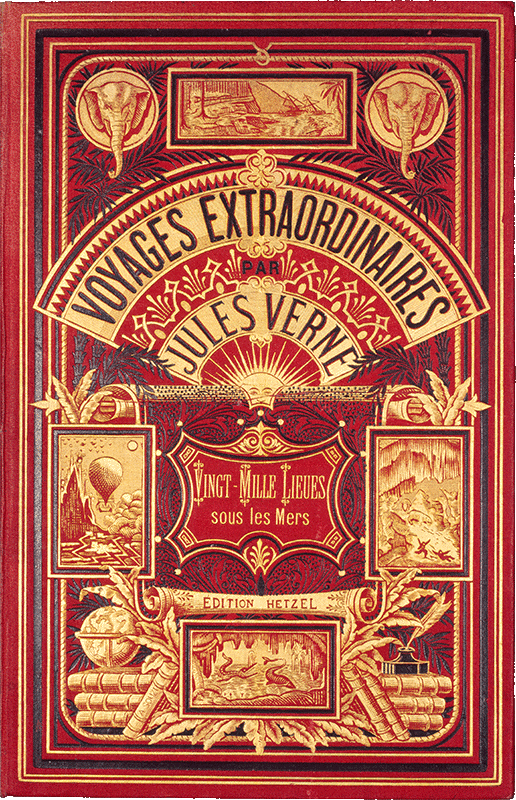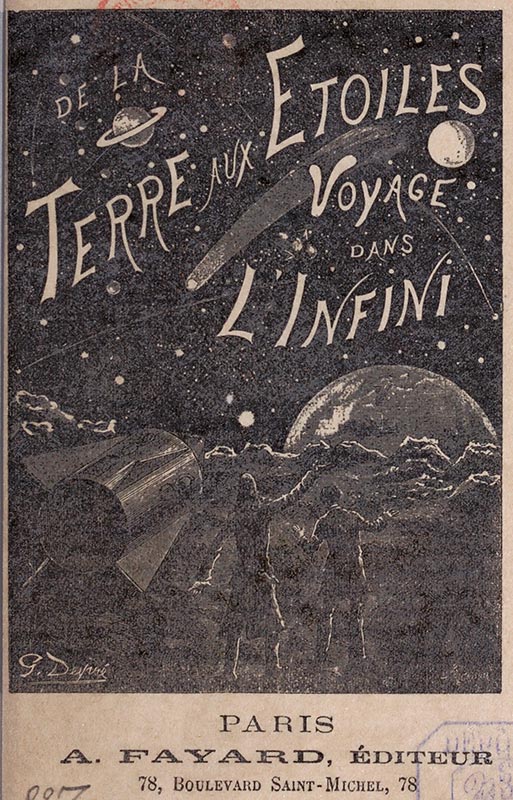Literature and Travel
“The omnibus B flying machine, which runs from the Central Tube Station on boulevard Montmartre to the very aristocratic suburb of Saint-Germain-en-Laye, followed, at the mandatory altitude of two-hundred-and-fifty meters, the undulating paths of the extended boulevards.”
Robida, Albert, Le vingtième siècle (The Twentieth Century), 1883, p. 2
With Cinq semaines en ballon (Five Weeks in a Balloon), published in 1863, Jules Verne gave rise to a new literary genre: science novels in which the science was no longer accessory.
On the contrary, it was at the very heart of the plot.
Guided by scientific characters (engineers, geologists, even mad scientists), readers journeyed through multiple worlds, exploring them with flying machine or diving bell… or even clinging to a comet’s tail.
In the latter part of the 19th century, many other authors leapt on the bandwagon of this type of novel.
Binding for Voyages excentriques: Corsaire Triplex
(Eccentric Journeys: Privateer Triplex),
Paul d’Ivoi, [1898].
Experiment in weightlessness in Voyages excentrique s:
Jean Fanfare (Eccentric Journeys: Jean Fanfare),
Paul d’Ivoi, 1897.
Paul d’Ivoi gave free rein to his imagination in his Voyages excentriques (Eccentric Journeys, 1894-1917), as did Henry de Graffigny in De la Terre aux étoiles (From the Earth to the Stars, 1882)
and Les Aventures extraordinaires d’un savant russe (The Extraordinary Adventures of a Russian Scientist Across the Solar System, 1889-1896) written with Georges Le Faure.
“His Excellence the Governor of the North Pole,” in Voyages très extraordinaires de Saturnin Farandoul
(The Adventures of Saturnin Farandoul), Albert Robida, [1879-1880].
“His Excellence the Governor of the North Pole,” in Voyages très extraordinaires de Saturnin Farandoul
(The Adventures of Saturnin Farandoul), Albert Robida, [1879-1880].
Le roman scientifique
As for Albert Robida, he serialized his character Saturnin Farandoul’s fantasy adventures in a futurist society where technological progress, like air transportation, has become part and parcel of daily life.
Realism was not necessarily a concern, and fictional fun often mattered more than science, but the authors did do their best to stimulate their readers’ interest in physics, astronomy, geology and geography.
Battle with a sea spider in Vingt mille lieues sous les mers
(Twenty Thousand Leagues Under the Sea), Jules Verne, circa 1880.
Modern technology and inventions showed up frequently. Authors like Jules Verne were particularly fascinated by electricity, which got a chapter of its own in his Vingt mille lieues sous les mers (Twenty Thousand Leagues Under the Sea): “Tout par l’électricité” (“All By Electricity”).
